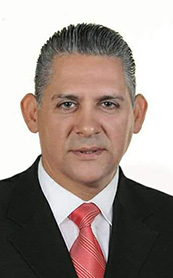
Dimension of the deep
By Tomas Núñez, ThD
The human being does not only have exteriority, which is his bodily expression. Not just interiority, which is his inner psychic universe. He is also endowed with depth, which is the spiritual dimension of him.
The spirit is not one part of the human being next to others. It is the entire human being, who through his consciousness discovers himself as belonging to a Whole and as an integral portion of it. Through the spirit we have the ability to go beyond mere appearances, of what we see, hear, think and love. We can grasp the other side of things, their depth. Things are not just ‘things’. The spirit captures in them symbols and metaphors of another reality, present in them but not limited to them, since it overflows from all sides. They remember, point and refer to another dimension, which we call depth.
Thus, a mountain is not just a mountain. Due to the fact that it is a mountain, it conveys the sense of majesty. The sea evokes the grandeur, the starry sky, the immensity, the deep furrows of an old man’s face, the hard struggle for life and the bright eyes of a child, the mystery of life.
It is characteristic of the human being, bearer of spirit, to perceive values and meanings and not only list facts and actions. In fact, what really counts for people is not so much the things that happen to them but what they mean to their lives and what kind of defining experiences they provided them.
Everything that happens existentially carries a symbolic character, or we can even say sacramental. Goethe already finely observed: “Everything that is temporary is nothing but a sign” (Alles Vergängliche ist nur ein Zeichen). It is characteristic of the sign-sacrament to make present a greater, transcendent meaning, to realize it in the person and make it an object of experience. In this sense, every event reminds us of what we experience and nourishes our depth.
That’s why we fill our homes with photos and beloved objects of our parents, grandparents, family and friends; of all those who enter our lives and who have meaning for us. It could be the last shirt worn by the father, who died of a massive heart attack at only 54 years old, the wooden comb of the beloved grandmother who died years ago, the dry leaf inside a book sent by the lover full of sadness. These things are not just objects; They are sacraments that speak to our depth, they remind us of loved people or significant events in our lives.
The human being does not only have exteriority, which is his bodily expression. Not just interiority, which is his inner psychic universe. He is also endowed with depth, which is the spiritual dimension of him.
The spirit is not one part of the human being next to others. It is the entire human being, who through his consciousness discovers himself as belonging to a Whole and as an integral portion of it. Through the spirit we have the ability to go beyond mere appearances, of what we see, hear, think and love. We can grasp the other side of things, their depth. Things are not just ‘things’. The spirit captures in them symbols and metaphors of another reality, present in them but not limited to them, since it overflows from all sides. They remember, point and refer to another dimension, which we call depth.
Thus, a mountain is not just a mountain. Due to the fact that it is a mountain, it conveys the sense of majesty. The sea evokes the grandeur, the starry sky, the immensity, the deep furrows of an old man’s face, the hard struggle for life and the bright eyes of a child, the mystery of life.
It is characteristic of the human being, bearer of spirit, to perceive values and meanings and not only list facts and actions. In fact, what really counts for people is not so much the things that happen to them but what they mean to their lives and what kind of defining experiences they provided them.
Everything that happens existentially carries a symbolic character, or we can even say sacramental. Goethe already finely observed: “Everything that is temporary is nothing but a sign” (Alles Vergängliche ist nur ein Zeichen). It is characteristic of the sign-sacrament to make present a greater, transcendent meaning, to realize it in the person and make it an object of experience. In this sense, every event reminds us of what we experience and nourishes our depth.
That’s why we fill our homes with photos and beloved objects of our parents, grandparents, family and friends; of all those who enter our lives and who have meaning for us. It could be the last shirt worn by the father, who died of a massive heart attack at only 54 years old, the wooden comb of the beloved grandmother who died years ago, the dry leaf inside a book sent by the lover full of sadness. These things are not just objects; They are sacraments that speak to our depth, they remind us of loved people or significant events in our lives.


Be the first to comment